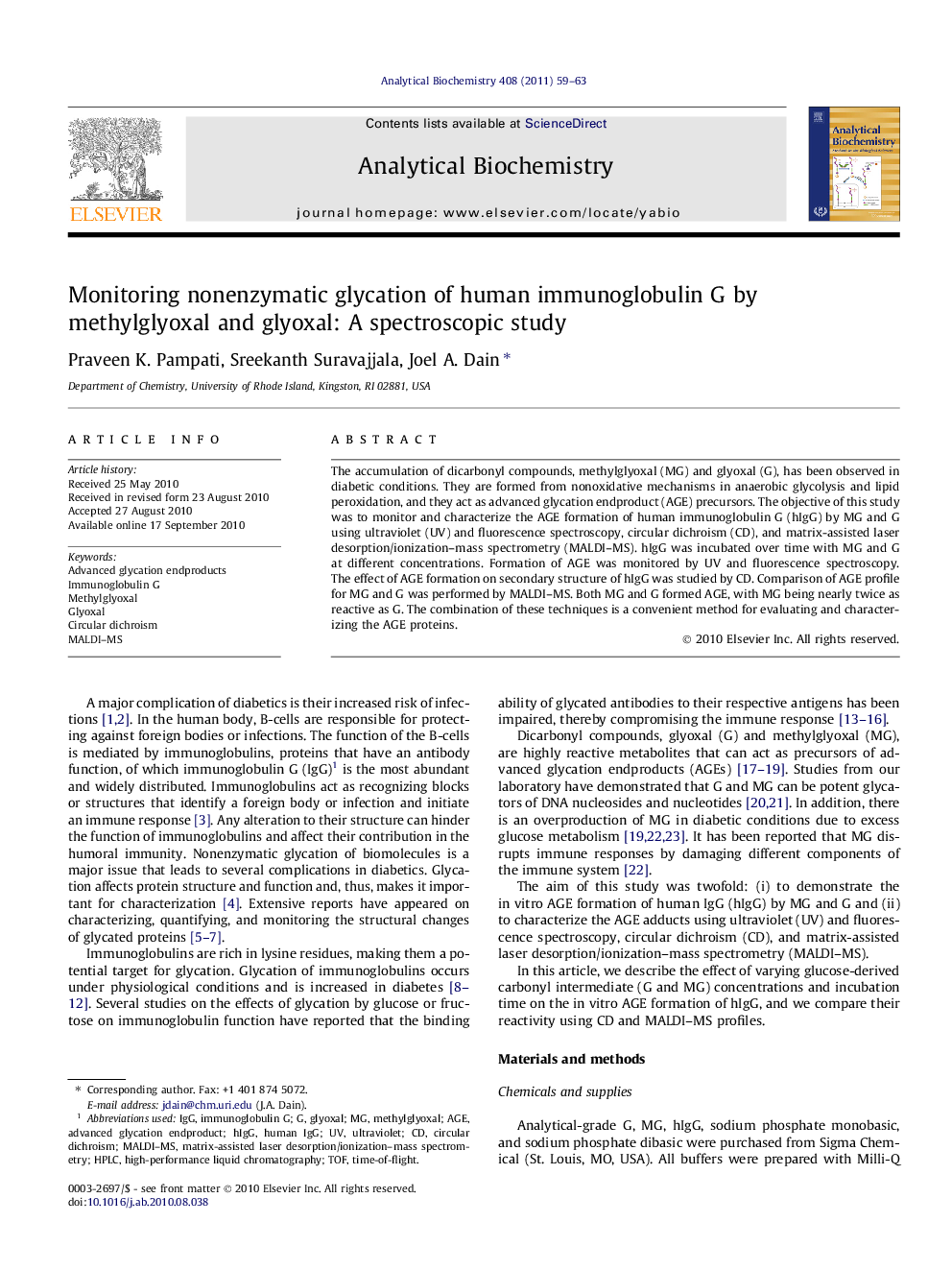| Article ID | Journal | Published Year | Pages | File Type |
|---|---|---|---|---|
| 1173764 | Analytical Biochemistry | 2011 | 5 Pages |
The accumulation of dicarbonyl compounds, methylglyoxal (MG) and glyoxal (G), has been observed in diabetic conditions. They are formed from nonoxidative mechanisms in anaerobic glycolysis and lipid peroxidation, and they act as advanced glycation endproduct (AGE) precursors. The objective of this study was to monitor and characterize the AGE formation of human immunoglobulin G (hIgG) by MG and G using ultraviolet (UV) and fluorescence spectroscopy, circular dichroism (CD), and matrix-assisted laser desorption/ionization–mass spectrometry (MALDI–MS). hIgG was incubated over time with MG and G at different concentrations. Formation of AGE was monitored by UV and fluorescence spectroscopy. The effect of AGE formation on secondary structure of hIgG was studied by CD. Comparison of AGE profile for MG and G was performed by MALDI–MS. Both MG and G formed AGE, with MG being nearly twice as reactive as G. The combination of these techniques is a convenient method for evaluating and characterizing the AGE proteins.
